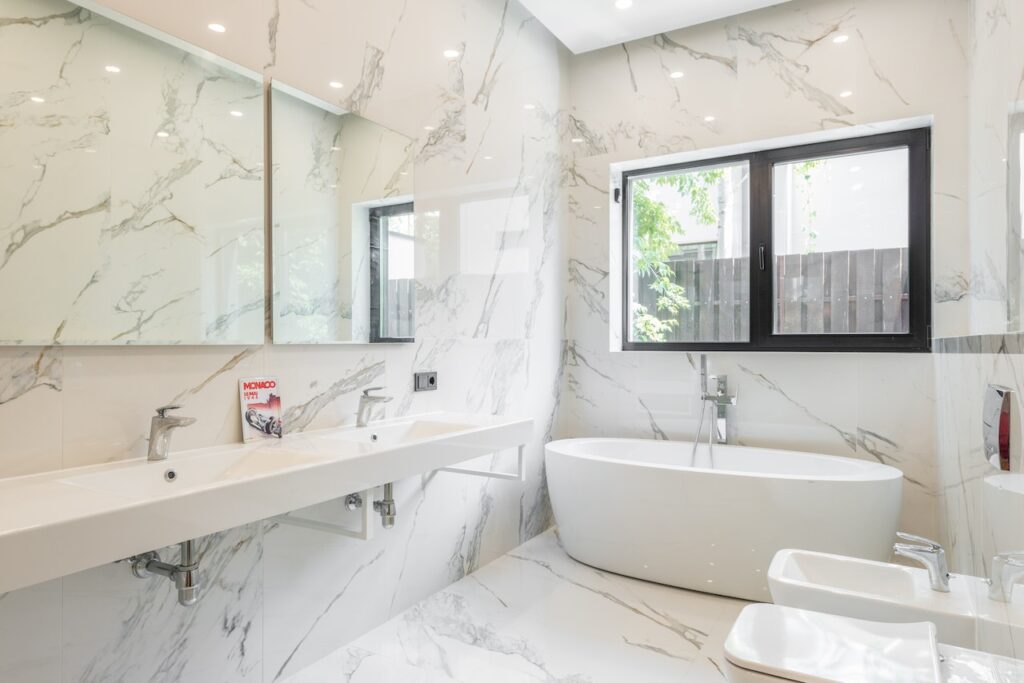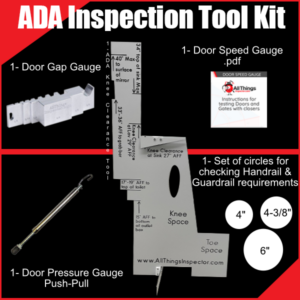
How safe is your bathroom? Is your bathroom dangerous for its users? Your bathroom should be a safe place because it is where you’re most vulnerable and prone to accidents. As such, some materials such as rugs and even water can lead to slips and falls in the bathroom which is why you have to make your bathroom ADA compliant.
Having an ADA-compliant bathroom helps people who are physically disabled and have limited mobility to use the bathroom comfortably without risking falls or accidents.

How do you identify an ADA-compliant bathroom? Continue reading to know more!
You can identify an ADA-compliant bathroom by the position of the grab bars. Grab bars help people with limited mobility move around comfortably in the bathroom. You can position the grab bars in strategic places where people need more help. You can install a grab bar near the toilet, bathtub, or shower. These grab bars can be added easily to a bathroom that’s not already ADA-compliant.
The height of materials in an ADA-compliant bathroom is quite different from that of a regular bathroom. In an ADA bathroom, the height of things needs to be lowered for easy accessibility by persons with limited mobility. The height of the cabinets, sink, and storage is usually lower in an ADA-compliant bathroom so that people who use wheelchairs can easily access them. Also, you must have an ADA bathroom door for easy access to the bathroom.
Hand showers can be used by anyone but it is more beneficial for those with a disability, muscle fatigue, or paralysis. Those who need to sit in the shower will find hand showers very helpful. These types of showerheads. So, yes, hand showers make a bathroom ADA-compliant.
A toilet with adequate space makes an ADA-compliant bathroom. According to ADA bathroom requirements, toilets should be 17 and 19 inches high to be considered ADA compliant. There should be enough space under the toilet so that there can be easy movement through the bathroom. You can install wall-mounted toilets as this will allow for more space in the bathroom. Also for ADA bathroom doors, the handles should be set lower to enable access into the bathroom.
Faucets and knobs shouldn’t be hard to turn and this is part of the ADA restroom doors requirements. Knobs and faucets should be turned with little pressure so that it doesn’t stress out the user. This applies to the toilet’s flushing device too. Also, the faucet and knobs should be of reasonable height so that people in wheelchairs can access them without difficulty.

Making these changes in your bathroom is what makes an ADA-compliant bathroom. You can also add non-slip rugs and mats in the bathroom to prevent falls and slips. An ADA-compliant bathroom isn’t just for disabled persons, people without disabilities will also enjoy using an ADA-compliant bathroom as it increases comfort and convenience.
At All Things Inspector, we help our clients make their bathrooms and toilets ADA-compliant. We can also help in converting an existing bathroom into an ADA-compliant one. We have years of experience in ADA compliance and we assure you of quality service.



Measuring door pressure is acting in compliance with building regulations, like the Americans with Disabilities Act (ADA). It’s an important step in ensuring accessibility, safety

When talking about building safety, the first things that come to mind are fire alarms, emergency exits and security systems. Meanwhile, the one tool that